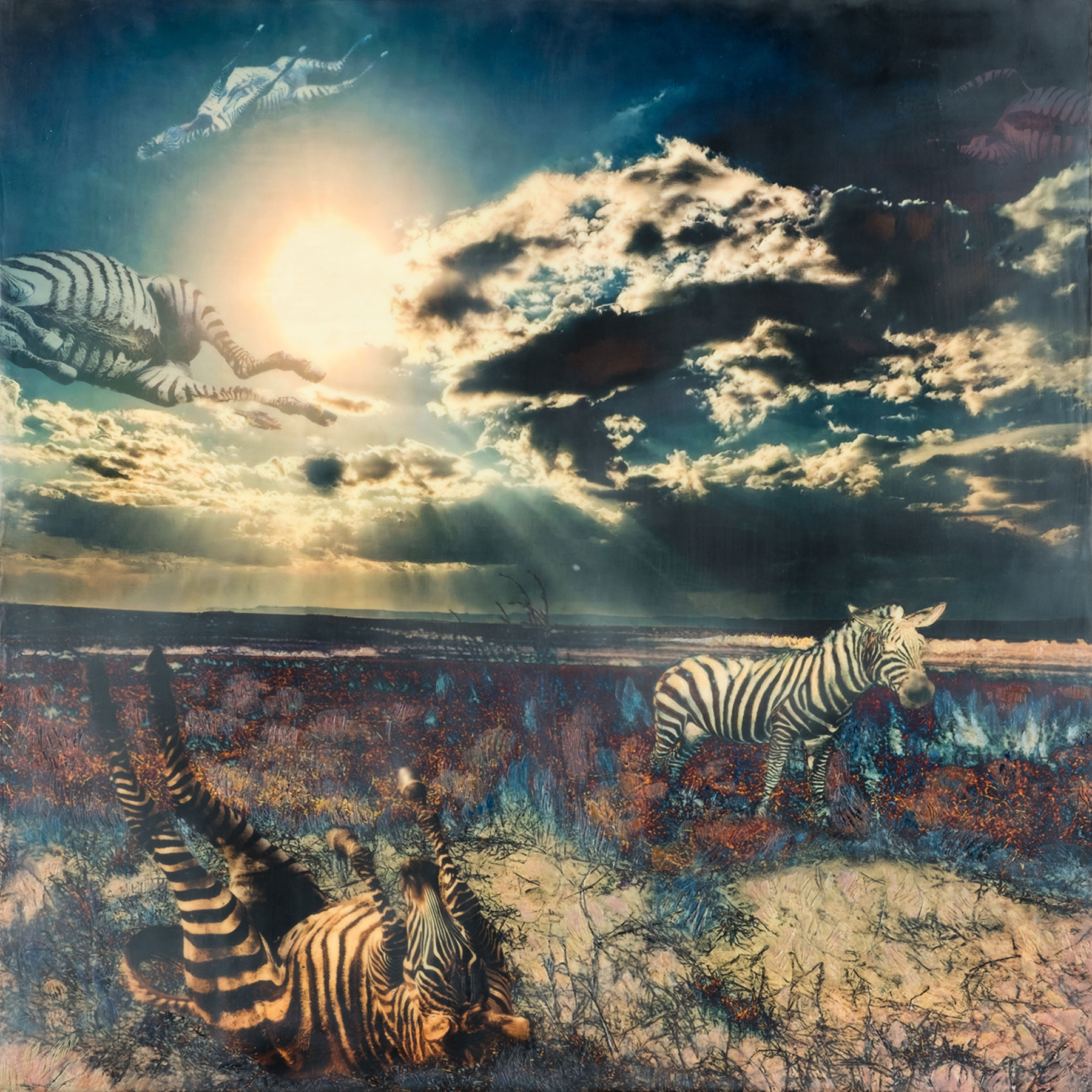
2024
GLOBAL WARMING IS REAL EXHIBITION
KAREN BUTTWINICK

KAREN BUTTWINICK
(Albany, California)
Patterns of Dystopia
encaustic, photographic imagery, oil on cradled panel, 20 x 20 x 1.5 inches
Unavailable – donated to permanent collection
Artist Statement:
Patterns of Dystopia warns of a warming world displacing wildlife from their habitat, drawing parallels to the apocalyptic weather events our planet has been experiencing in recent years.
Grevy’s zebras, one of three zebra species in Africa, listed as endangered, have experienced a significant decline in their range, with their population decreasing by 54% over the past three decades with about 2,800 remaining. Mountain zebras are considered vulnerable, and Plains zebras are near threatened. As a primary herbivore, zebras are ecologically significant in the African grasslands and savannas. By grazing, zebras maintain the ecosystem by preventing some plant species from dominating, allowing other plant life to emerge. These grazing patterns increase biodiversity with plant life and with other herbivores who rely on a range of vegetation to survive. If zebras were to become extinct, their predators would die due to a lack of food supply.
The zebra holds symbolic importance in African cultures, representing balance, harmony, and unity. Climate change has caused our planet to be out of balance, wreaking havoc on both human and animal communities. African folklore attributes spiritual significance to a zebra’s black and white stripes, reflecting life’s dualities and interconnectedness, such as light and darkness, and good and evil.
We are all interconnected on earth, and we must critically examine the interrelationship and tension between human activity and our planet. We must ask ourselves, “How can we reflect on our own environmental impact and make a difference in confronting this existential climate crisis?”
Click here to return to the Global Warming Exhibit main page.

